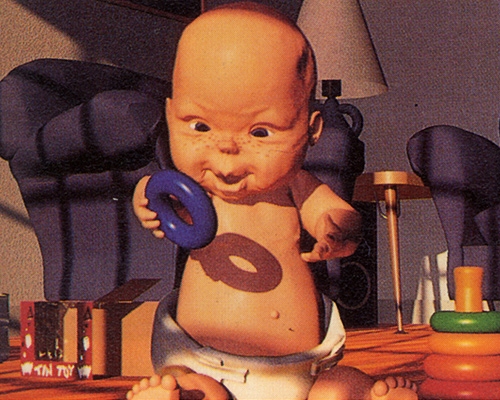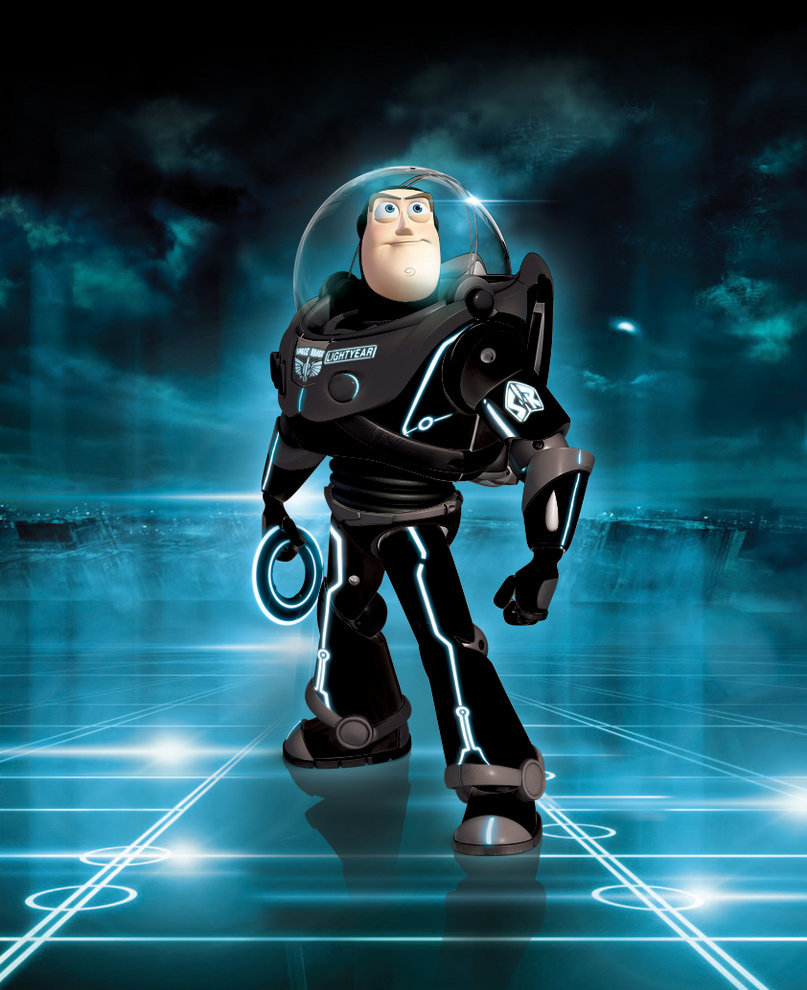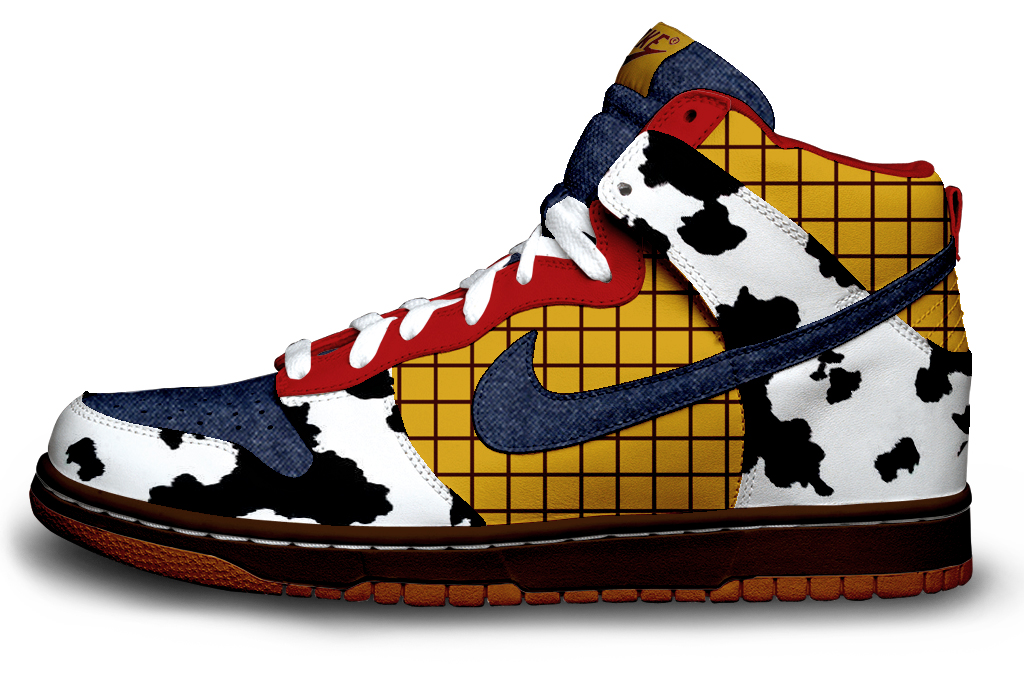62
It started out as just a pitch, an idea to expand the animated short “Tin Toy” into a Christmas special. The mad computer animation wizards in a company called Pixar Animation Wizards had decided to call it “A Tin Toy Christmas.” After many writers, and rewriters, and underwriters, and copywriters it eventually evolved into number 62 on our countdown. You may know it as Toy Story.

This image is from the original short "Tin Toy" and may be the most terrifying thing ever produced by Pixar.
It was the first film ever made completely with CGI, a process whereby tiny elves inside of a beige box with blinking lights are said to “generate imagery.” The film is filled with almost endless wonder. Green army men walk with their feet molded forever together at the base. And the aliens from Pizza Planet speak in hushed and reverent tones of something known only as “The Claw.” It is still the only Pixar movie to be released with just the Disney logo above its title (instead of both Disney AND Pixar logos). And quite surprisingly, it is Pixar’s least successful film at the box office. Of course it’s Pixar so that’s not really saying much.
In fact, John Lassiter and Pixar were so adamant that they did not want to be a clone of Disney Feature Animation that they took many steps to avoid such a comparison. These steps included, but are not limited to: being creative, original, timeless, and touching. At the time, it was even considered bold and controversial when they insisted that Toy Story should not be a musical. There are many reasons behind this, but famed fan-boy screenwriter Joss Whedon, of fan-boy fame, who helped write the screenplay for the film, explains it this way:
“It would have been a really bad musical, because it’s a buddy movie. It’s about people who won’t admit what they want, much less sing about it.”
This is perhaps true, but does not explain why no other Pixar movies have been musicals either. The buddies Whedon speaks of are perhaps two of the best-known characters in modern cinema today: Buzz Lightyear and Woody Pride.
Oh, and by the way … Woody’s last name? Yeah, it’s Pride. This goes pretty far back into development of the films and is actually very fitting considering how jealous Woody is of Buzz when he shows up in Andy’s Room. Named after Woody Strode, he was originally intended to be a ventriloquist dummy. However we find out later that Woody is nothing less than a singing cowboy. (But seriously, it’s not a musical). It’s always hard to say with buddy movies which is the main character, but in this one it’s clear, it is Woody. Because Woody is the main character, he has that sort of everyman quality that sometimes can be mistaken as no quality at all. Therefore he seems to pale in comparison to what is perhaps Pixar’s greatest creation.
Buzz Lightyear does not know he’s a toy. He actually believes himself to be a Space Ranger. Probably because that’s what it says on the box that he came in. Which he believes to be a spaceship, and which he instantly begins to repair with scotch tape which he calls “unidirectional bonding strip.” Buzz is more flashy than woody. Literally flashier. He has red and green lights on his expandable wings that flash to indicate port and starboard. This attention to detail and Buzz’s six-foot-four, two-hundred-twenty pound, laser, rocket arm makes Woody believe that he will not be played with as much. It is for this reason that Woody is intent on proving to Buzz that he is a toy, and not on a “secret mission in uncharted space.” Woody is later redeemed by the fact that he does actually make a pretty strong case for the greater benefits of being a toy, but it would not be right to say that this noble purpose was his initial motivation throughout the film.

Buzz as Tron: If this blog existed solely to provide you with this image, then it would not have been written in vain.
Although Buzz is more modern, it actually took the animators longer to animate Woody because he was not as rigid and had more emotions that needed to be readable on his face. Again because Woody is the emotional center of the film he needed to be more expressive. Woody is voiced by Tom Hanks, the well-known director of such hits as “That Thing You Do,” … and many more! That being said, it’s actually the animators that win us over here. In fact, Toy Story is such watershed digital achievement that it’s almost stunning to realize that when it hit home video it was on VHS, which a brief trip to Wikipedia tells me was some sort of cassette or “cartridge” that one had to painstakingly rewind at the end of viewing its content.
In an effort to offset this odd juxtaposition, Pixar later went back and added another camera to every frame of animation so that it could be re-released in 3D. Something Lassiter termed “digital archeology.” This is possibly the reason they never got around to making that Tin Toy Christmas special. Well, that and the terrifying baby thing.
Next up … 61!


I’d like to know your source for the information that this “started out as just a pitch . . . to expand the animated short “Tin Toy” into a Christmas special [called] “A Tin Toy Christmas.” I have commented elsewhere that the central germinating idea for its two hits, “Toy Story” and “Toy Story 2” may be found in Disney’s “Fantasia 2000.” One segment of “Fantasia 2000” pertains to the Disney version of Andersen’s “The Staunch Tin Soldier.” According to the Andersen classic, after “all the other tin soldiers went back into their box, and the people in the house went to bed . . . [t]he toys now began to play games–visiting, fighting, dancing.”
The Andersen fairy tale is probably one of the earliest “toys come to life” stories, and probably inspired everything from Babes in Toyland to Charlie and the Chocolate Factory. But Fantasia 2000, as its name suggests, came out in 2000. Toy Story came out in 1995, and Tin Toy was released in 1988.
Yes, of course, you’re right. I should have said that “proof” that the central germinating idea was Anderson’s classic may be found in Fantasia 2000. I’m still pleased that you found a source that seems to corroborate my hunch, however. Could you fill me in on where you found the information that Toy Story started out as”Tin Toy” and then “A Tin Toy Christmas”?